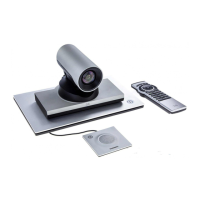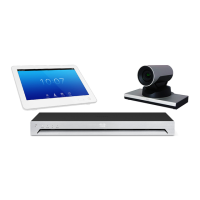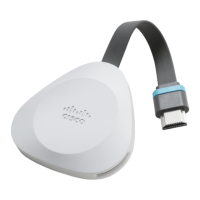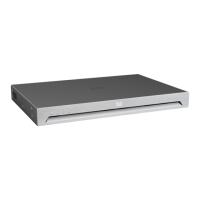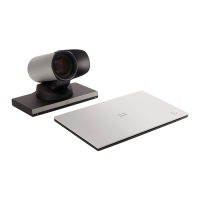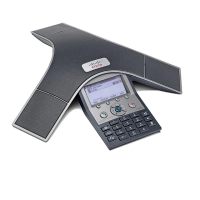D14908.02 SX20 Administrator Guide TC6.0, JANUARY 2013. www.cisco.com — Copyright © 2012-2013 Cisco Systems, Inc. All rights reserved.
81
Cisco TelePresence SX20 Quick Set Administrator Guide
SIP settings
SIP ListenPort
Turn on or off the listening for incoming connections on the SIP TCP/UDP ports. If turned off the
endpoint must be registered with a SIP registrar to be reachable.
Requires user role: ADMIN
Value space: <On/Off>
On: Listening for incoming connections on the SIP TCP/UDP ports is turned on.
Off: Listening for incoming connections on the SIP TCP/UDP ports is turned off.
Example:
SIP ListenPort: On
SIP Profile [1..1] URI
The SIP URI or number is used to address the system. This is the URI that is registered and
used by the SIP services to route inbound calls to the system. A Uniform Resource Identifier
(URI) is a compact string of characters used to identify or name a resource.
Requires user role: ADMIN
Value space: <S: 0, 255>
Format: Compact string with a maximum of 255 characters.
Example:
SIP Profile 1 URI: "sip:firstname.lastname@company.com"
SIP Profile [1..1] DisplayName
When configured the incoming call will report the DisplayName instead of the SIP URI.
Requires user role: ADMIN
Value space: <S: 0, 255>
Format: String with a maximum of 255 characters.
Example:
SIP Profile 1 DisplayName: ""
SIP Profile [1..1] Authentication [1..1] LoginName
This is the user name part of the credentials used to authenticate towards the SIP proxy.
Requires user role: ADMIN
Value space: <S: 0, 128>
Format: String with a maximum of 128 characters.
Example:
SIP Profile 1 Authentication 1 LoginName: ""
SIP Profile [1..1] Authentication [1..1] Password
This is the password part of the credentials used to authenticate towards the SIP proxy.
Requires user role: ADMIN
Value space: <S: 0, 128>
Format: String with a maximum of 128 characters.
Example:
SIP Profile 1 Authentication 1 Password: ""
SIP Profile [1..1] DefaultTransport
Select the transport protocol to be used over the LAN.
Requires user role: ADMIN
Value space: <TCP/UDP/Tls/Auto>
TCP: The system will always use TCP as the default transport method.
UDP: The system will always use UDP as the default transport method.
Tls: The system will always use TLS as the default transport method. For TLS connections
a SIP CA-list can be uploaded to the video system. If no such CA-list is available on the
system then anonymous Diffie Hellman will be used.
Auto: The system will try to connect using transport protocols in the following order: TLS,
TC P, U DP.
Example:
SIP Profile 1 DefaultTransport: Auto

